From this…
to this
in only one week.
Continuing a mild obsessions with learning about garden history at the moment, and taking advantage of a visit to see my father in Malvern, we went on a trip to visit Croome Park, an example of Lancelot ‘Capability’ Brown’s English landscape garden. I’ve been boring friends and family over the past few weeks with talk of progressive realisation and unity of materials, so thought I’d bore you too.
Brown started work at Croome Park after leaving Stowe, where he had been head gardener. George William, the 6th Earl of Coventry, employed Brown to drain the ‘morass’ and landscape it according to the new style. The new style was naturalistic parkland right up to the house, doing away with all those old-fashioned parterre style gardens. To draw the eye, the pleasure gardens were artistically strewn with neo-classical buildings. A glimpse of a building around the corner or in the distance draws you on, revealing more of the garden, opening out views and surprising the visitor. Many of the buildings at Croome were designed by Robert Adam.
Major works were required to drain the marshy ground – you can still see some of the culverts that Brown had put in to drain water away from where it was not wanted, to where it was wanted. The bricks were made on site.
Previous, formal, gardens close to the house were destroyed, along with a church which the Earl felt was too close to the house. A new church, in a gothic style, was built in a much more attractive place – on the rise of the hill.
Brown oversaw the excavation of lake and river, using the serpentine curves indicative of the English landscape style. The river is entirely artificial – no mean feat when dug by hand. The lake took advantage of a boggy area rather unattractively called ‘Seggy Mere’. Now, it is a contemplative space, with mature trees reflected in the still waters.
The pleasure grounds curve round the view from the house, with pastureland in the foreground. A circular ha-ha keeps the animals in without restricting the view.
The landscape looks natural but is entirely manmade. Picturesque clumps of trees aren’t just plonked – they are designed to beautify the view. It’s amazing to think that as you look over the scene, it was done by hand, by men. No flowers, except some shrubs in the pleasure garden. No ornate parterres and symmetry as went before, but nevertheless man’s hand on the landscape. A little bit of knowledge may be a dangerous thing, but in this case a little bit of knowledge has allowed me a greater understanding of some of the gardens I have visited. This is particularly so in the case of the English landscape movement gardens, where before I just saw fields and trees. A very interesting visit.
It’s around this time of year that the tips of the branches of trees and hedges take on a golden highlight. They always remind me very much of highlights in George Michael’s Wham era hair. I don’t know why – I was never much of a Wham fan.
I’m currently studying for an Advanced Certificate in Gardens Design. Our first assignment is a 3000 word essay on garden design principles within four eras of garden design history. We’ve learnt about Italian Renaissance, French Baroque and the English Landscape Movement, and also about design in the Victorian era. So today, inspired by our lectures, I set off to Biddulph Grange to see an excellent example of Victorian eclectic design, my mind buzzing with concepts of unity, proportion, progressive realisation and transition.
What a place. Not subtle, but a smack in the mouth – the Victorian equivalent of a theme park. The home of James Bateman, he designed the gardens as a tour of the world, so you travel from the glens of Scotland, go through a tunnel and emerge in a pastiche of China. I adored it. It’s mad. And the benches were fantastic - I got a bit obsessed. There are horse chestnut leaves and fruits, ferns and berries, acorns, lily-of-the-valley – beautiful. Who needs a throne when you have benches like these?
Ahhh, the eternal passing of time. It’s GBBD again, and I see that the flowers this year are rather similar to last year’s. However, Autumn hasn’t progressed quite so rapidly with the witch hazel – the leaves are still very green apart from a slight colour change clinging to the edges of each leaf.
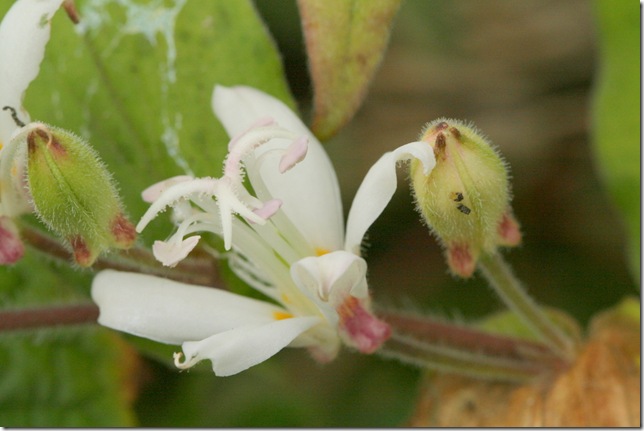 Toad lily – a highlight of white in a shady border that looks best in the spring.
Toad lily – a highlight of white in a shady border that looks best in the spring.
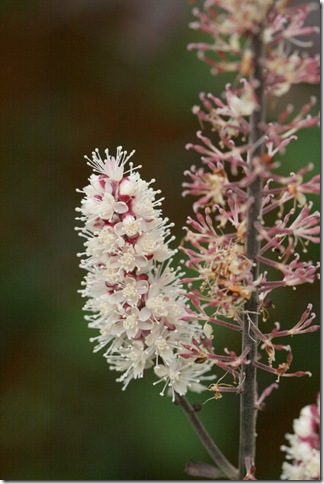 Actaea simplex. Cimicifuga was a name that you could roll around your mouth; Actaea is a much spikier name.
Actaea simplex. Cimicifuga was a name that you could roll around your mouth; Actaea is a much spikier name.
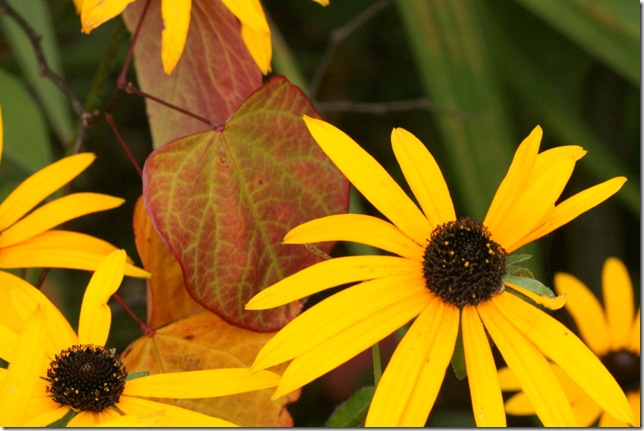
Rudbeckia ‘Goldsturm’ and Cercis ‘Forest Pansy’ leaves
Aster (possibly ‘Andenken an Alma Potschke’ – areal mouthful of a name)
Another aster, only about 30cm high. It is a wall of flowers at the moment.
Ivy flowers – swarming with flies, hoverflies and wasps
And waiting in the wings for November’s GBBD – Fatsia flowers.
Thanks to Carol at May Dreams Gardens for hosting GBBD. Visit her to see flowers blooming around the world.
It's the time of year when squirrels are hoarding nuts, when jays are burying acorns, and when I gather up the harvest. There's something instinctive about hoarding food before the harsh winter arrives. It sits deep in the psyche.
I have a book by Victor Osborne, called 'Digger's Diary', about a year in the life of an allotment-holder. Osborne frequently refers to his ‘Inner Saxon Peasant' or ISP. The Inner Saxon Peasant is the one which burst forth when I see the potatoes being ravaged by blight, when the pigeons take out the tops of the newly planted cabbages, when the carrot root fly reduces the carrot harvest to a 3D maze of holes. We’re lucky to be in the position of having our allotment as a hobby. We won’t starve if the caterpillars eat our kale. But the Inner Saxon Peasant fears the beasts that eat its produce.
And so it is good to appease the Inner Saxon Peasant and lay down a good store. Despite the wet summer here, it wasn’t warm enough for blight to strike, so this year, thankfully, I wasn’t digging up putrid potato tubers. We do have some wireworm damage but I’m not sure how extensive it is.
The ISP is particularly pleased with my attempts at preserving. I’ve made jam before but never so extensively, and I’ve supplemented the jam with mincemeat, fruit cordial and chutney.
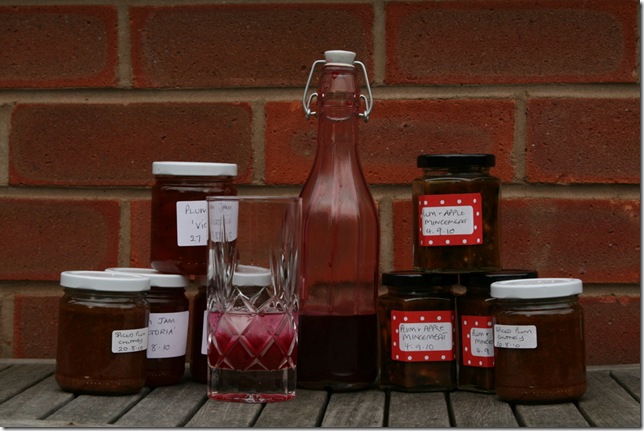 But the real success which means that my ISP is happy to move towards the long days of winter is the food that stores itself. The pumpkins and squashes have been making a bid to take over the whole allotment site over the past couple of months, but they have provided us with food in handy hard cases. The ‘Crown Prince’ squashes should last until early spring.
But the real success which means that my ISP is happy to move towards the long days of winter is the food that stores itself. The pumpkins and squashes have been making a bid to take over the whole allotment site over the past couple of months, but they have provided us with food in handy hard cases. The ‘Crown Prince’ squashes should last until early spring.
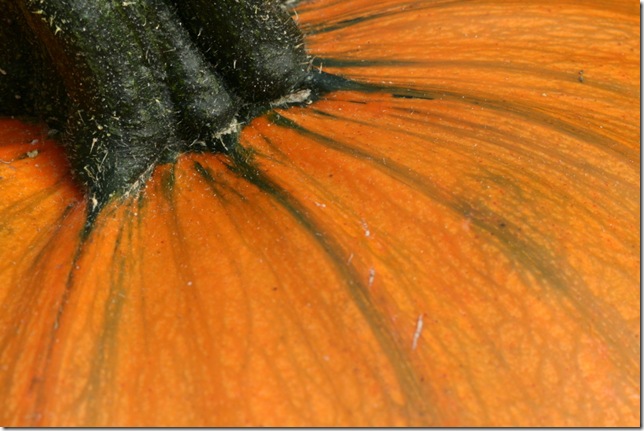 Comforting autumn and winter food. My Inner Saxon Peasant approves.
Comforting autumn and winter food. My Inner Saxon Peasant approves.
I’m taking a leaf out of SomeBeans’ book and using a blog post to write a reminder of a book I’ve just read. The book in question is ‘A Pioneering Plantsman – A K Bulley and the Great Plant Hunters’ by Brenda McLean, courtesy of Chester library.
Over the past 12 months I’ve read several books about the great plant hunters and the trials they endured to bring new species (and even new genera) of plants to the attention of the British gardener. If you’re interested in this subject, there can’t be a much better illustration of the dangers and privations that plant hunters suffered than the biography of David Douglas – the man who brought the Douglas-Fir (Pseudotsuga menziesii) into cultivation. Although this tree commemorates Douglas’s successful seed saving in its common name, its Latin name celebrates its discoverer, Archibald Menzies. If you’re interested in reading about Douglas and his arduous (and ultimately fatal) plant hunting expeditions, I’d recommend this book.
But what of the people who financed these expeditions? They did not have to put themselves through the dangers of hunting out the plants, but without their backing our gardens would have been a lot poorer. Perhaps one of the most famous backers of plant hunters in the Victorian time was the Veitch Nursery of Exeter and Chelsea. This link gives some information on the Veitch Nursery, and this one lists some of the introductions of plants by plant hunters employed by the Veitches – an impressive list which includes the beautiful Davidia involucrata, the seeds of which were collected by E H ‘Chinese’ Wilson, one of their most famous hunters.

A less well-known sponsor of plant hunting in the early 1900’s was A K Bulley. Born in 1861 to a cotton merchant family in Liverpool, Bulley developed an early love for natural history and plant cultivation. He was a committed socialist, standing unsuccessfully as a Parliamentary candidate in three elections, including as a Women’s Suffrage candidate.
In 1897, Bulley bought some land at Ness, on the Wirral peninsula, where he built a house, Mickwell Brow, and started to develop the gardens. From the start, the gardens were freely open to the public between dusk and dawn, every day except Christmas Day. The gardens are still open to the public now, (although not freely!) after being gifted to the University of Liverpool by his daughter in 1948.
Bulley started a commercial nursery in the gardens in 1904 – Bees Ltd., as well as continuing his cotton trading. The title of this post comes from a Bees’ advertisement. The nursery sold seeds of all types of plants, many of which were displayed in the extensive herbaceous borders at Ness. However, Bulley’s main interest throughout his life was in alpine plants.
In the early 1900’s, the cotton trade was doing well, so Bulley felt that he had sufficient funds to be able to support a plant hunter to expand his plant collection. In correspondence with Sir Isaac Balfour, of the Royal Botanic Garden of Edinburgh, the name of George Forrest was recommended. And so Forrest was sent to North west Yunnan, China. This area was decided upon as it was not quite on Veitch’s and Wilson’s stamping ground, but would supply the alpine and hardy herbaceous plants which Bulley craved both for his own interests and for his business interests. New introductions of seed could command high prices.
Forrest was subjected to difficult conditions and hostility, as well as the vagaries of Bulley’s purse strings. However, he discovered large numbers of new plants, and collected their precious seeds. Pieris formosa forrestii was discovered by Forrest, and a plant from the original seed still grows at Ness. As the Bees nursery grew, Bulley recognised the opportunity for advertising his nursery through the names of newly discovered plants, and so introduced Primula beesiana, Jasminium beesianum and Allium beesianum. Bulley himself is commemorated in many plant names, including Primula bulleyana (candelabra primula) and Androsace bulleyana. Forrest also collected seed of the previously discovered Primula viallii.
Primula viallii growing at Ness Gardens
Bulley continued to support Forrest’s expeditions for several years, despite Forrest’s concerns about payment – Bulley on occasions left Forrest without sufficient funds.
Another plant hunter supported by Bulley was Frank Kingdon-Ward. This was a man who loved the adventurous life of an explorer, but wasn’t quite as systematic in his plant-hunting as Forrest, which sometimes frustrated Bulley. Neverthless, Kingdon-Ward provided seed of many species new to cultivation which were subsequently sold by Bees. These included Gentiana wardii, Primula chungensis and Rhododendron wardii. Kingdon-Ward went on to collect seed from many rhododendron species in China, such as Rhododendron lanigerum.
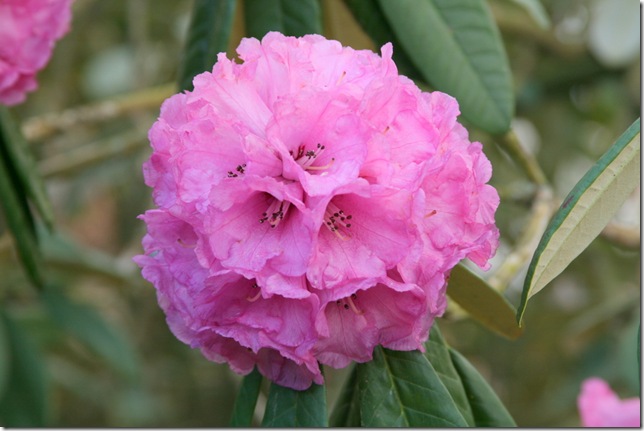 Rhododendron lanigerum at Ness Gardens.
Rhododendron lanigerum at Ness Gardens.
Moving on from China, Bulley was looking to the Himalayas, and employed a young collector called R E Cooper. Cooper busily collected alpine plants from Sikkim, but to Bulley’s dismay these high alpine specialists were almost impossible to grow in the UK, and those that did grow were not marketable enough to make a profit. Cooper’s second trip for Bulley was to the ‘hidden kingdom’ of Bhutan, where he discovered plants such as Cotoneaster cooperi and Viburnum grandiflorum. However, Cooper’s finds were generally of more interest to botanical science than as plants to grow in a garden, and Bulley never recouped in sales the amount of money that Cooper’s expeditions cost.
With the onset of the First World War, Bulley reduced his sponsorship of plant hunters, though he had a part share in Reginald Farrer’s expedition to China. After the war, Farrer set off to Burma, where he found the beautiful Nomocharis farreri. There was tension between Bulley and Farrer, as Farrer was of gentrified stock as opposed to Bulley’s merchant background, and Farrer did not enjoy being beholden to Bulley’s rather stingy and often late financial support. Farrer unfortunately died and was buried in the Burmese hills whilst collecting.
Still obsessed with alpines, Bulley also supported exploratory expeditions to the areas surrounding Mount Everest, providing money for the expedition in return for seed collecting. A range of new rhododendrons were collected, as well as a new primula – Primula wollastoni, named after the naturalist on the expedition, Dr A F R Wollaston.
With his obsession for rare and beautiful alpine plants, Bulley was always looking for new ways of growing his precious collection. This led to an experiment which caused a backlash in the press of the time, and something which we would consider very bad form nowadays. Bulley had seen the alpine gardens which have been made on some mountains in the Alps, and thought that they could be emulated in the UK.
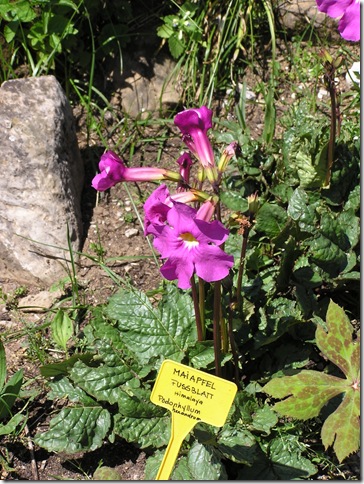 Podophyllum hexandrum (from the Himalayas) growing in the Alpenblumengarten on Kitzbuheler Horn.
Podophyllum hexandrum (from the Himalayas) growing in the Alpenblumengarten on Kitzbuheler Horn.
He rented 500 acres of land on Mount Snowdon in Wales and planted up a range of alpines, many of which had been discovered by his plant hunters. His idea was to naturalise and experiment with exotics in the wild. He was aware that there might be concern over this, but knew that the plants were temperamental and very unlikely to escape from the ‘garden’ and outcompete native plants. However, the press exaggerated the scale of his experiment, and the negative publicity associated with the scheme, as well as poor survival rates of the plants, meant that he eventually had to abandon it. Bulley continued to support plant hunters, though now as one of a number of subscribers rather than the sole sponsor.
After his death his daughter, Lois Bulley, gifted Ness Gardens to the University of Liverpool, who still own it. Nowadays it is a botanic garden, still containing many of the plants that were grown from seed by Bulley’s gardeners. The rhododendrons and camellias impress in the Spring, as do the candelabra primulas.
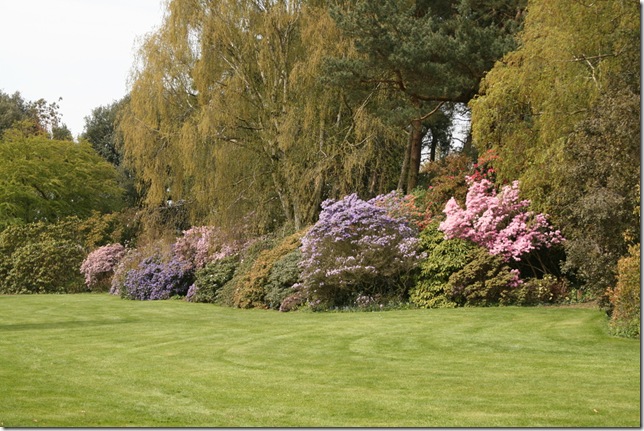 The pine woods and rhododendron border at Ness.
The pine woods and rhododendron border at Ness.
We are both ‘Friends of Ness’ and visit it regularly. If you get there when it opens, you often have the place to yourself and it is easy to imagine that the gardens belong to you. But of course, that was never how Bulley intended it. The gardens were always for everyone. Partly a showcase for his seed company but mostly because he felt it was his duty to make his gardens available, for free, to anyone who wanted to visit them. As he said to other gardeners in a radio talk given in 1934: “I want you to throw them open. It is your delightful privilege. …every now and again, you will get the exceptional pleasure of seeing someone like yourself, who goes round really understanding and appreciating the difficulties you have met, and the successes you have scored. It’s fine. Start this spring. Goodnight.”
Thanks to VP for pointing me in the direction of this book.